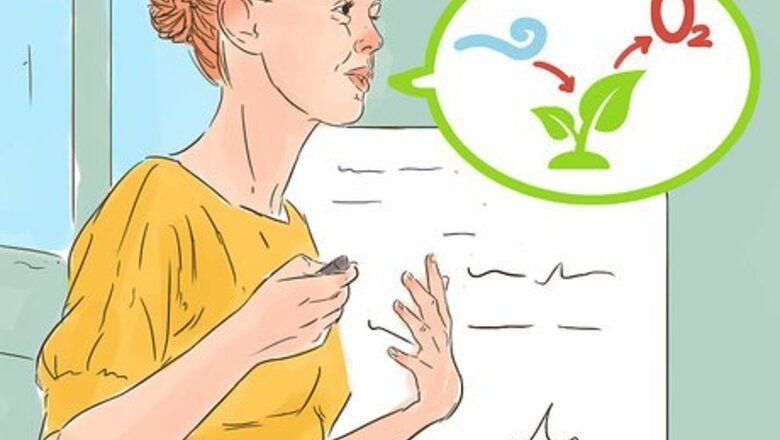
views
Explaining Why Photosynthesis is Needed
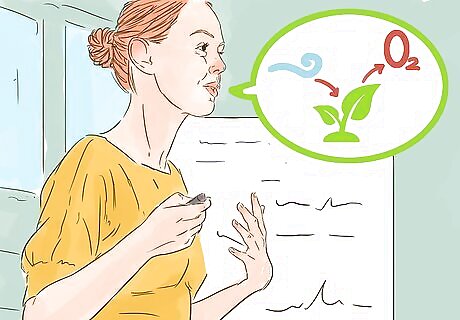
Discuss how plants create oxygen. Photosynthesis is the process by which plants convert the sun’s energy into chemical energy. The series of reactions used to do this conversion (referred to collectively as photosynthesis) creates molecular oxygen, O2. This oxygen, which is critical for all other life on the planet, is released into the atmosphere. If you are teaching children, you can summarize this by saying that plants take in the carbon dioxide that we breathe out, and turn it into oxygen.
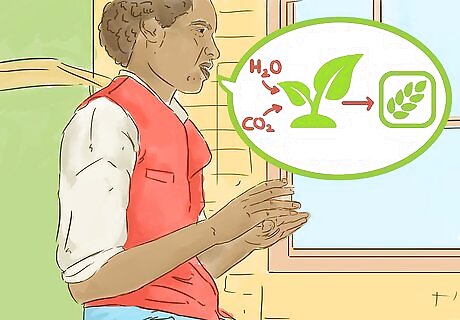
Point out that plants create carbohydrates. Carbohydrates are molecules that are built primarily of carbon and hydrogen. They are used by plants to store the energy collected from the sun. During photosynthesis, the plant takes carbon dioxide, CO2, and water, H2O, from its environment to create carbohydrates to store energy. Not only are carbohydrates used by the plant to store energy, but that energy is transferred to animals that consume the plant as food. For children, you can explain that plants make sugars and starches out of sunlight, water, and carbon dioxide.
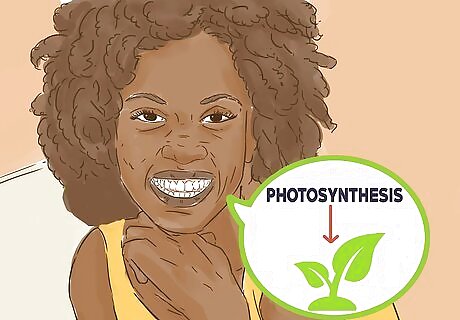
Mention that photosynthesis occurs mostly in plants. While photosynthesis is carried out by some other organisms, the process is primarily utilized by plants. Even carnivorous plants (e.g., the venus flytrap) obtain their energy from photosynthesis and use their prey as a way to collect the materials to build cells (e.g., proteins, nitrogen, etc.). It is important that the person trying to understand photosynthesis keep the process in perspective as the way that plants, and some organisms such as certain bacteria, produce energy. Young children typically associate photosynthesis only with plants. Only mention other lifeforms if the child is old enough to know what they are.
Discussing the Light Dependent Reactions
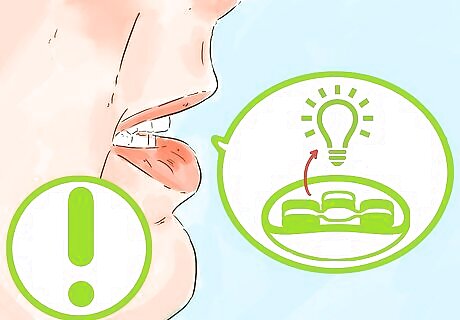
Break down the chloroplasts. The chloroplast is an organelle within plant cells that allows for photosynthesis to occur. The light dependent phase of photosynthesis uses the energy from the sun to create energy-storing molecules that are needed later in the photosynthetic process. This is made possible by a substance in the chloroplasts, called chlorophyll, that absorbs electromagnetic energy (in the form of light) from the sun. It is appropriate to mention chlorophyll to children, but keep it very basic. You could note that chlorophyll absorbs energy from the sun.
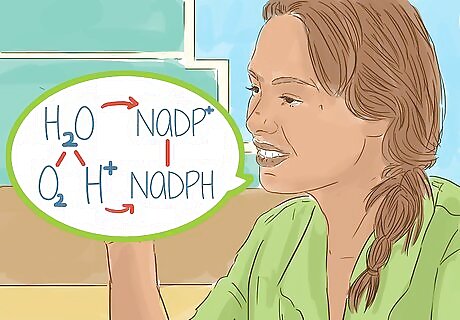
Discuss the 2 photosystems. The light dependent reactions take place in 2 phases. First, the light activated photosystem II splits water molecules. This creates creates molecular oxygen, O2 and H ions (also known as protons). Some of the protons are utilized, to form adenosine triphosphate (ATP) from adenosine diphosphate (ADP). The remaining protons are transferred from photosystem II to photosystem I, and there they are used to convert nicotinamide adenine dinucleotide phosphate ion (NADP) to nicotinamide adenine dinucleotide phosphate (NADPH). When teaching photosynthesis to kids, you could explain that the energy from the sun is used to divide water molecules into oxygen and hydrogen molecules.
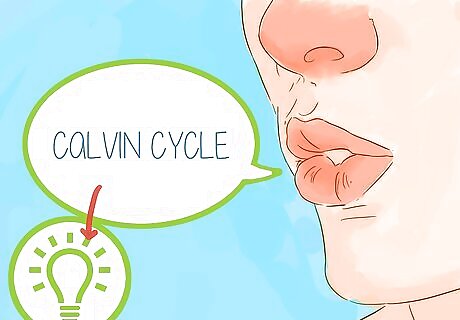
Know the products of the light dependent reactions. The primary products of the light dependent reactions are oxygen, ATP, and NADPH. The oxygen is released into the atmosphere, while the ATP and NADPH are utilized by the plant for the next phase of photosynthesis—the light independent reactions (also known as the Calvin Cycle). No carbohydrates are produced during the light dependent phase of photosynthesis.
Examining the Light Independent Reactions
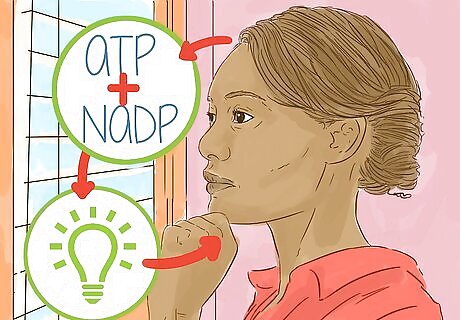
Recognize that the products from light dependent reactions drive light independent reactions. ATP is a molecule used to store and exchange energy. NADPH is a molecule used to transport electrons. Both will be needed during the light independent phase of photosynthesis to provide energy for carbon fixation to occur. The light independent reactions can be carried out by the plant in the light or in the dark, whereas the light dependent reactions can only happen in the light.
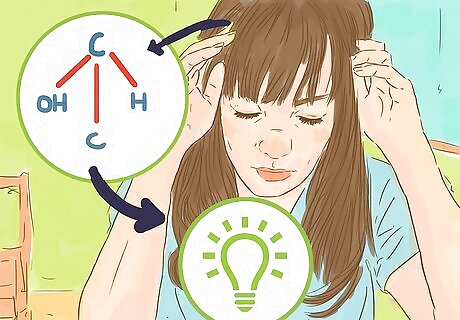
Explain carbon fixation. Carbon fixation is the process by which carbon atoms or carbon based molecules are bonded to (or fixed to) other carbon atoms or molecules. Carbohydrates, such as glucose, are constructed in this manner. This process requires a lot of energy that is supplied by ATP and NADPH. You can tell young learners that the plant “sticks together” carbons from carbon dioxide.
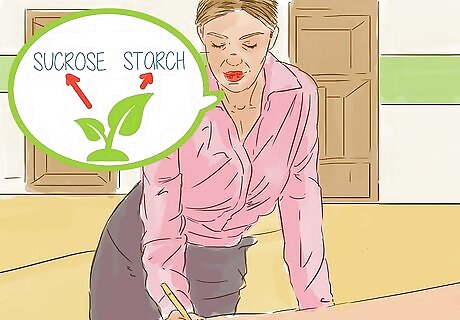
Show the products of light independent reactions. The light independent reactions are the last set of photosynthesis reactions. Through carbon fixation, glyceraldehyde-3-phosphate (G3P) is produced. G3P is a small carbohydrate that can be converted into longer carbohydrates such as sucrose or starch. Sucrose is used by the plant for energy. Starch is stored in the chloroplasts as an energy reserve.










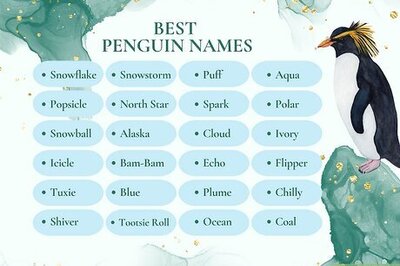

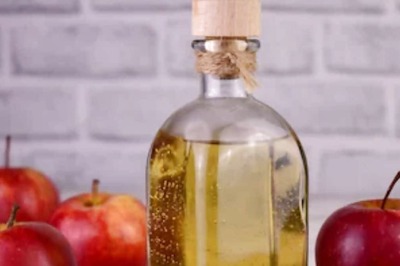



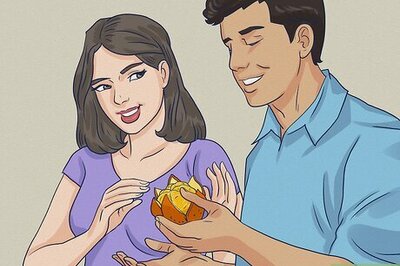


Comments
0 comment